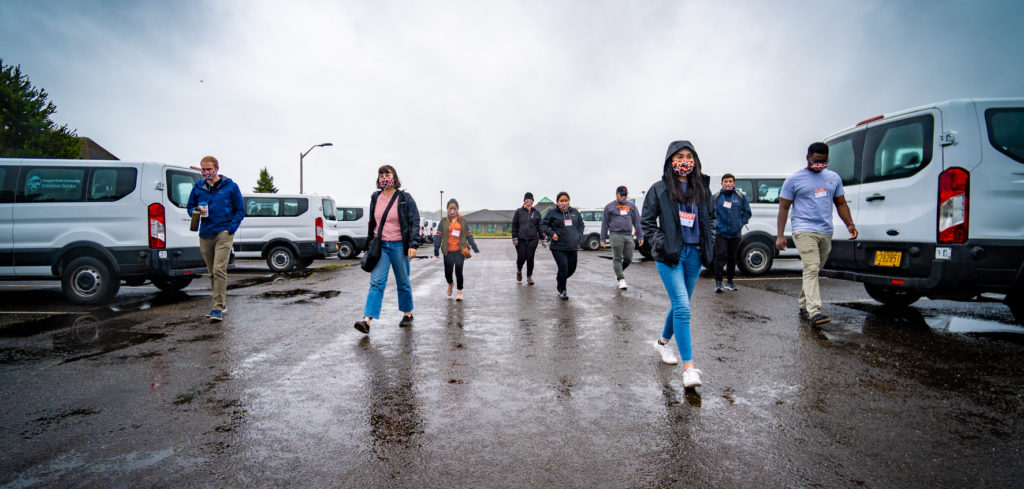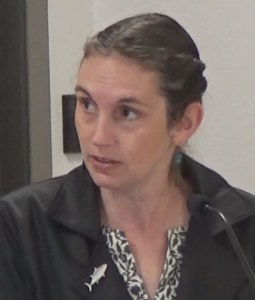
By STEVE LUNDEBERG/OSU News Service
The groundbreaking Oregon State University sampling project that helps determine community prevalence of coronavirus will return to Newport for two more days of sampling this weekend, July 11-12.
Results from door-to-door sampling June 20-21 showed that 3.4 percent of Newport residents – 34 of every 1,000 — have the coronavirus. That is a rate 17 to 34 times greater than for Corvallis and Bend, where similar sampling has occurred.
As of Monday, Lincoln County has had 346 COVID-19 cases, the majority concentrated in Newport, and four deaths, all in Newport.
OSU also announced Monday that testing of Newport’s sewage for six days in June found strong evidence of coronavirus there, but that samples in Yachats and Depoe Bay did not.
Oregon State started its TRACE-COVID-19 project in Corvallis and Bend, then came to Newport after a large outbreak at Pacific Seafood spread into the community. TRACE-COVID-19 stands for Team-based Rapid Assessment of Community-Level Coronavirus Epidemics.

“We are very grateful that OSU is able to return to Newport,” Lincoln County Commissioner Kaety Jacobson said in a statement Monday announcing OSU’s return. “The prevalence data we received from the first weekend of TRACE sampling was extremely valuable in giving us a snapshot of what was going on in our community. The additional data we will get from this coming weekend will let us know if our efforts to curtail the spread of COVID-19 are working, or if additional actions need to be taken.”
Sewage samples from three Lincoln County wastewater treatment plants also were collected and then analyzed by Oregon State researchers for genetic evidence of SARS-CoV-2, the virus that causes COVID-19. Samples collected in Newport on June 10-12 and June 17-19 showed “a strong signal of SARS-CoV-2,” said Tyler Radniecki of the OSU College of Engineering, a principal investigator on the sewage surveillance team.
There will also be additional sewer testing done in Newport, OSU said.
Sewage samples taken in Yachats and Depoe Bay on June 5-7 and June 10 showed no evidence of the novel coronavirus in those communities.
“The results tell us only what was occurring at the time of sampling, not what is happening today,” Radniecki said. “They should not be interpreted as an indication that any of these communities can relax their vigilance. Everyone in each of these communities should be encouraged to wear face coverings, social distance, avoid groups of people and seek medical assistance if warranted.”
During its June visit to Newport, OSU field workers collected samples from 336 of the households they visited, or 71 percent, across 30 neighborhoods. In all, the workers received samples from 569 people, and 13 tested positive for COVID-19.
In Newport, TRACE leaders are partnering with OSU’s Hatfield Marine Science Center and the OSU Extension Service. Oregon State’s work in Newport complements other sampling, testing and contact tracing assistance being given by health officials from Lincoln, Tillamook and Clatsop counties.
“The results from the a second round of TRACE sampling will provide a snap shot in time to see if the prevalence of the virus is changing and inform local residents and county and local health care providers with an immediate sense of the city’s COVID-19 wellness,” said Bob Cowen, director of the Hatfield Marine Science Center.
At each home visited by TRACE field workers, members of the household are invited to participate in the study. Those who choose to take part are asked to provide information such as their name and date of birth; to fill out a simple consent form; and to answer a few confidential, health-related questions.
Participants are given a nasal-swab test kit that they administer to themselves inside their home and their minor children if they want them to take part. The field staff wait outside, and the participants leave the completed test kits outside their front door.
The field workers leave participants with information about the project and how they will receive their results – available in seven to 10 days – as well as health guidance from Lincoln County and the Centers for Disease Control and Prevention.
The TRACE study is a collaboration of the OSU colleges of Science, Agricultural Sciences, Engineering, Public Health and Human Sciences, and the Carlson College of Veterinary Medicine and the OSU Center for Genome Research and Biocomputing – in partnership with county health officials.
For more information about TRACE, visit the TRACE-COVID-19 website. The site includes a list of frequently asked questions.


